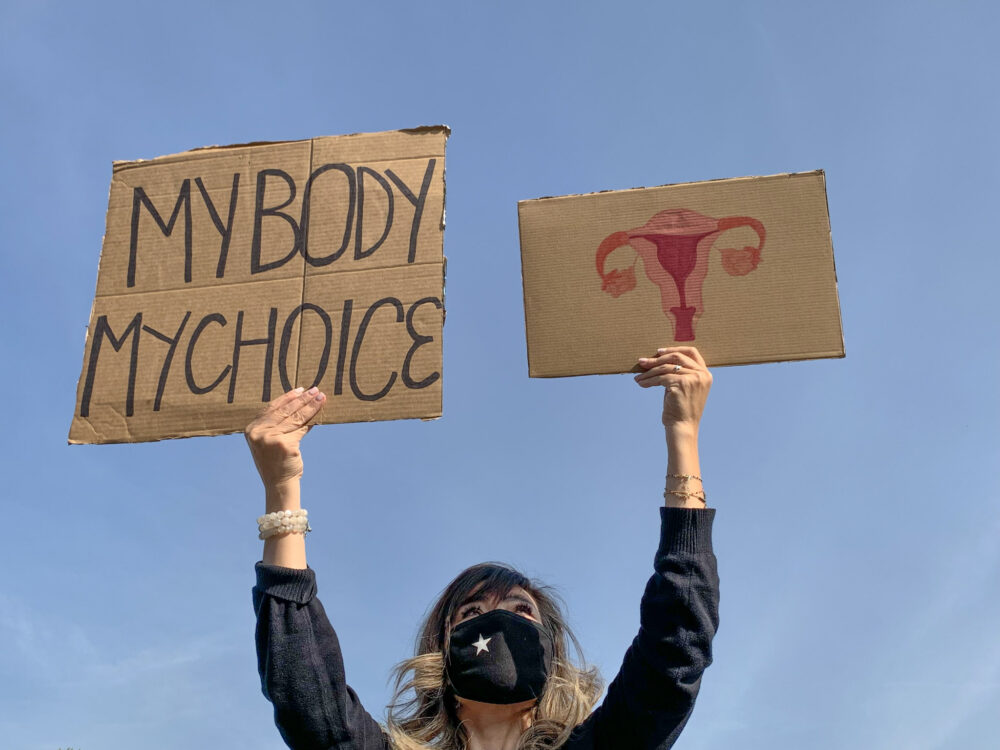
By Reese Meister
Governor Gavin Newsom has made preparations to accept an increase of people seeking abortions in California in response to changing abortion laws around the country. While abortions are legal in every US state, obstacles from method bans to coverage restrictions can severely decrease their accessibility.
The year 2021 held the most abortion restrictions ever made in the span of a year, one being Texas’ Senate Bill 8 (SB 8). SB 8 which went into effect on Sept. 1, 2021, and became known as the “heartbeat bill” for its ban on abortions after the time when a fetus’s heartbeat can be detected, around six weeks into pregnancy. The only exceptions to the law depend on the woman’s health and safety in “medical emergencies.”
Whereas most women will not become aware of their pregnancy in the six-week frame that Texas allows an abortion, California allows an abortion up until the point of viability. This is the point when no extreme medical care is needed for the fetus to survive outside the womb, though exceptions can be made for health concerns of the woman.
State officials do not enforce SB 8, rather, they encourage other Texans to sue anyone who “aids or abets” an abortion, though not the recipient herself. Those who are successful may receive $10,000 or more.
The Supreme Court dealt with two challenges to this law but passed the cases back to Texas’ 5th US Circuit Court of Appeals, which now retains control over the case.
As SB 8 remains intact, Dr. Janet Jacobson, a Planned Parenthood medical director in Southern California reports that about twice as many out-of-state patients have visited their clinics daily compared to before Texas’ ban. Jacobson increased the number of staff and appointments available to ensure that Californians still receive proper care.
However, SB 8 is not the only new restriction that could impact the number of people California receives. A Supreme Court case, Dobbs v. Jackson Women’s Health Organization challenges Mississippi’s 2018 law that restricts abortions after 15 weeks into pregnancy. If the 6-3 conservative majority rules in favor of this law, Roe v. Wade, the case that made abortion legal nationwide, may be overturned.
In this scenario, an estimated 26 states plan to ban abortion completely, while others will enforce further restrictions. Some, including Texas, have trigger bans, which automatically ban abortion if Roe is ever overturned.
As of 2017, California provided 15% of abortions in the United States among its 419 medical sites available for the procedure. With the decision of Dobbs v. Jackson Women’s Health Organization comes the possibility of a predicted 3,000% increase in people who travel to California for an abortion.
Newsom, in preparation of the influx of out-of-state abortion patients traveling to California, has collaborated with reproductive health experts, referring to the state as a “sanctuary”. California Future of Abortion Council (CA FAB Council), a key group, was established in September of 2021 and consists of over 40 organizations aiming to improve and protect access to abortions.
So far, CA FAB Council has contributed to California’s foundational abortion care by promoting medical care training and opportunities to work in abortion care for the BIPOC community. They also work to protect everyone involved in an abortion and invest in education about abortions.
In September, Newsom responded to Texas’ SB 8 with two new laws. It is now illegal to film people within 100 feet of an abortion clinic for the sake of privacy. Newsom also made it easier for a person to keep their abortion confidential while under their parents’ insurance.
As of now, CA FAB Council wants the ability to provide medical abortion, abortion by a pill, through telemedicine to out-of-state patients, which is currently illegal. They also plan to introduce more clinics to easily accessible, populous hubs.
One main obstacle for women seeking abortions, especially from out-of-state, is price. A surgical abortion that takes place after ten weeks into a pregnancy costs, on average, $887, while a medical abortion costs $306. Most private insurance companies will not pay for out-of-state abortions.
The organization ACCESS Reproductive Justice helps both in-state and out-of-state patients finance their abortions in California. CA FAB Council is working to decrease the price of an abortion and increase the amount of money that Medi-Cal will supply.
Many also face the obstacle of a parental consent requirement, which specifically challenges immigrants and other minority groups. In California, neither parental consent nor partner consent is necessary, and providers can make arrangements to keep the abortion completely confidential.
While many Californian abortion providers have made accomodations for the rise in patient numbers, anti-abortion centers in the state have made adjustments as well. There are around 160 of these centers working to persuade women not to get abortions, and they similarly decided to hire more workers.
Though it may prove demanding, Newsom and California organizations have strategized to adjust to an expected influx in out-of-state women seeking abortions. They will continue to extend the attainability of abortions through future laws such as the requirement for public universities to offer medical abortions, which goes into effect on Jan. 1, 2023.





